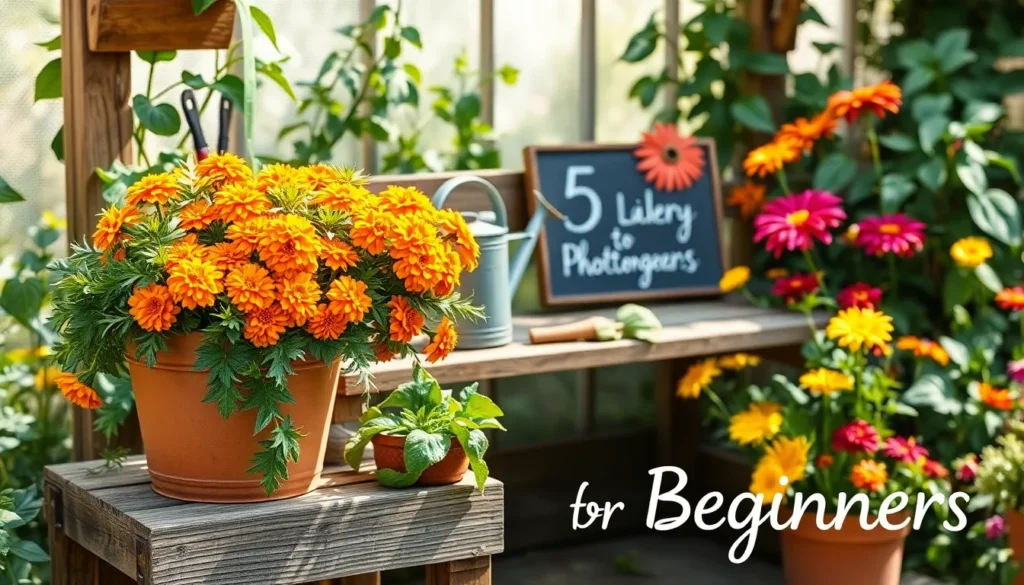Imagine stepping into your garden, a vibrant tapestry of colors greeting you as the sun peeks over the horizon. For both budding and seasoned gardeners, cultivating such a scene might seem daunting, but it doesn’t have to be. Whether you’re just starting your gardening journey or have nurtured your green thumb for years, choosing the right flowers can make all the difference in creating a flourishing garden. By selecting blooms that are as forgiving as they are beautiful, you can enjoy success with minimal fuss and transform your outdoor space into a blooming paradise.
This article will guide you through five easy-to-grow flowers that promise beauty without the burden of complex care. You’ll not only discover their unique attributes but also learn simple, practical tips to help them thrive in your garden. From choosing the right location to understanding their watering needs, we’ll walk through each step with you, ensuring you feel confident and excited to get planting. Join us on this colorful adventure, and you’ll soon see how accessible and rewarding gardening can truly be.
Choosing Beginner-Friendly Flower Varieties
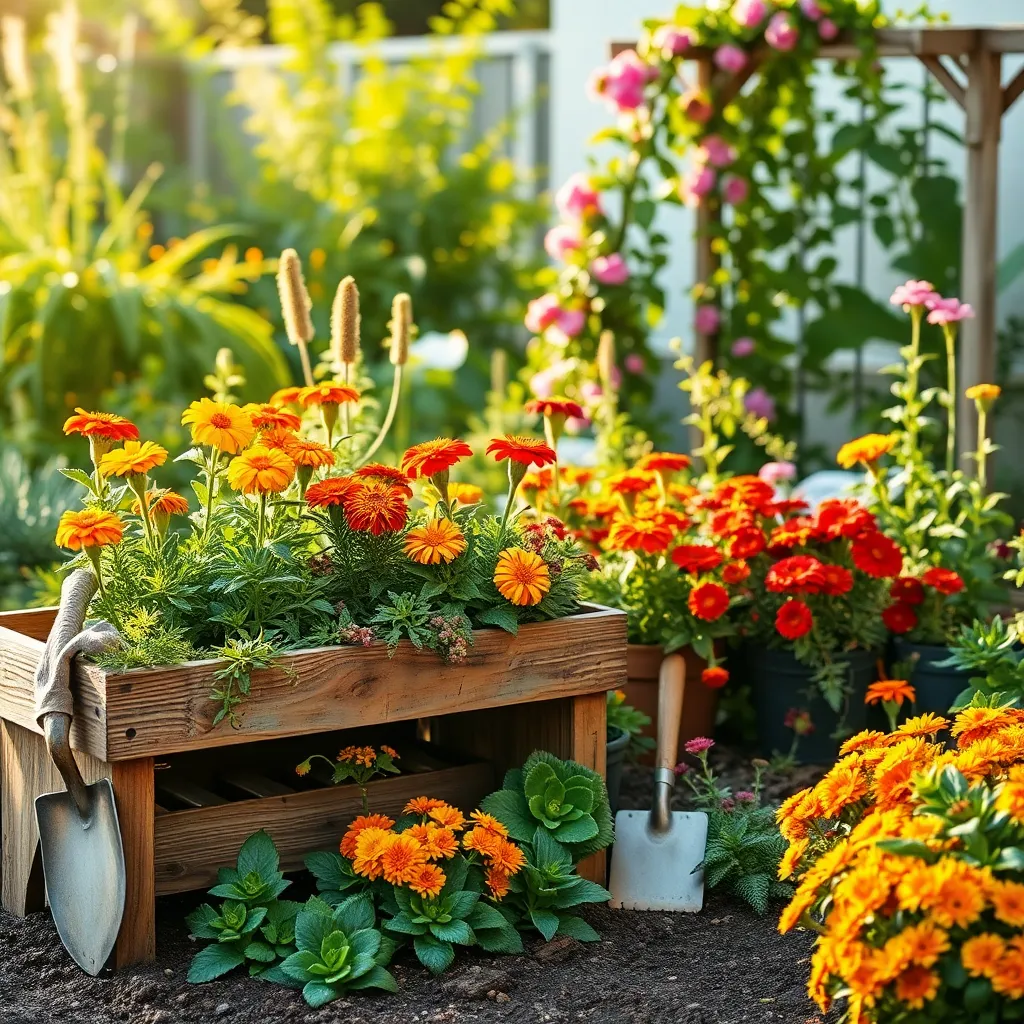
When selecting beginner-friendly flowers, consider those that thrive with minimal care and offer significant visual rewards. Marigolds are an excellent choice, as they are hardy, easy to grow, and provide vibrant colors that brighten any garden.
Marigolds prefer full sun and can tolerate a wide range of soil types, making them adaptable to various garden conditions. Regular watering is essential, but ensure the soil is well-drained to prevent root rot.
Another great option is the zinnia, known for its bold colors and long blooming season. Zinnias thrive in sunny locations and require only moderate watering, making them perfect for beginner gardeners.
To encourage bushier growth in zinnias, pinch back the tops when the plants are about a foot tall. This simple technique will result in more blooms and a fuller plant.
Consider sunflowers if you want to add some height and drama to your garden. These towering beauties need plenty of sunlight and should be planted in well-drained, nutrient-rich soil.
Water sunflowers deeply but infrequently to encourage them to develop strong root systems. As they grow, providing support with stakes can prevent the tall stems from toppling over in the wind.
Understanding Sunlight Needs for Growth
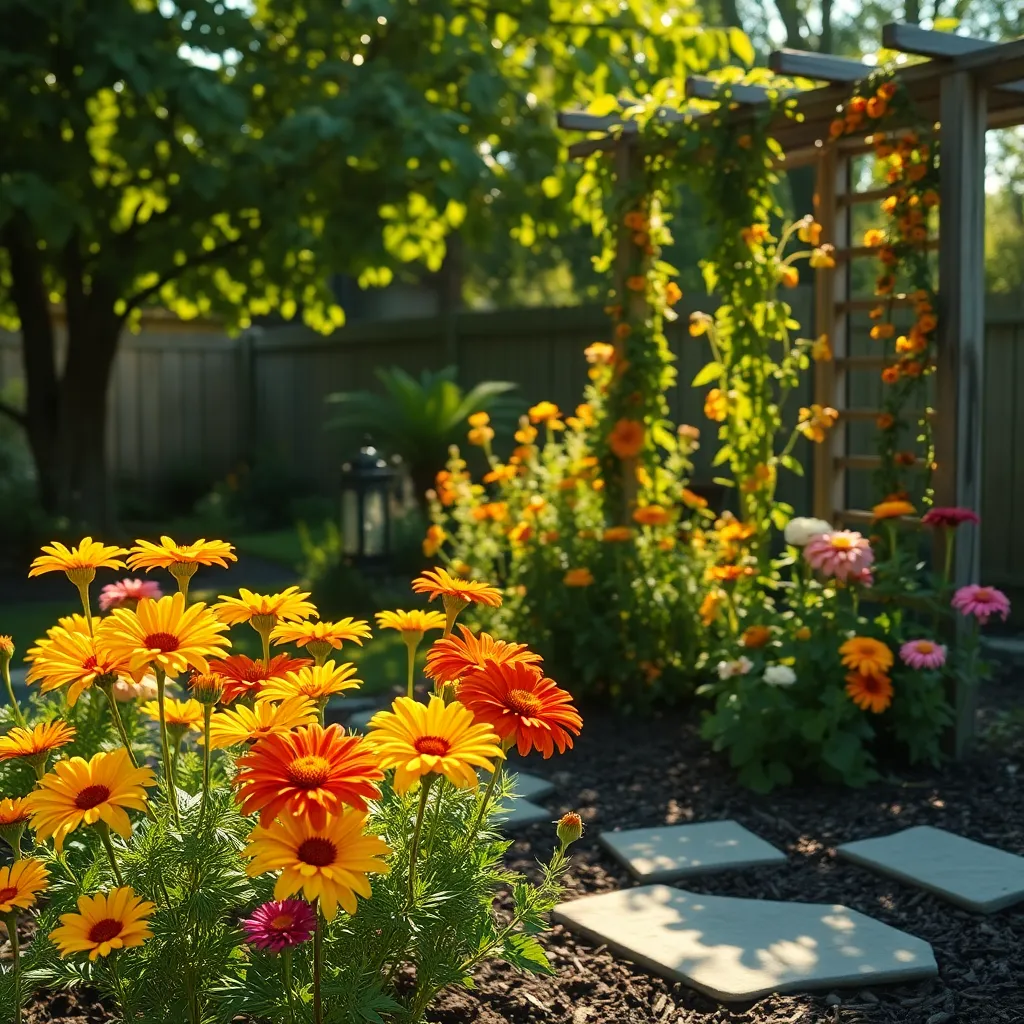
Understanding the sunlight needs of your flowers is crucial for their growth and bloom. Many beginner-friendly flowers, such as marigolds and zinnias, thrive in full sun conditions, which means they require at least six hours of direct sunlight daily.
It’s important to observe your garden throughout the day to determine where sunlight is most abundant. This will help you decide the best spots for planting your sun-loving flowers, ensuring they get the light they need.
For those with gardens that receive less sunlight, consider choosing flowers like impatiens, which tolerate partial shade. These plants can thrive with only a few hours of morning or late afternoon sun, making them versatile for various garden settings.
Advanced gardeners might explore the use of reflective surfaces to increase sunlight exposure in shadier areas. Placing mirrors or light-colored walls nearby can help redirect sunlight to your plants, promoting healthier growth even in less ideal conditions.
Basic Soil Preparation Techniques
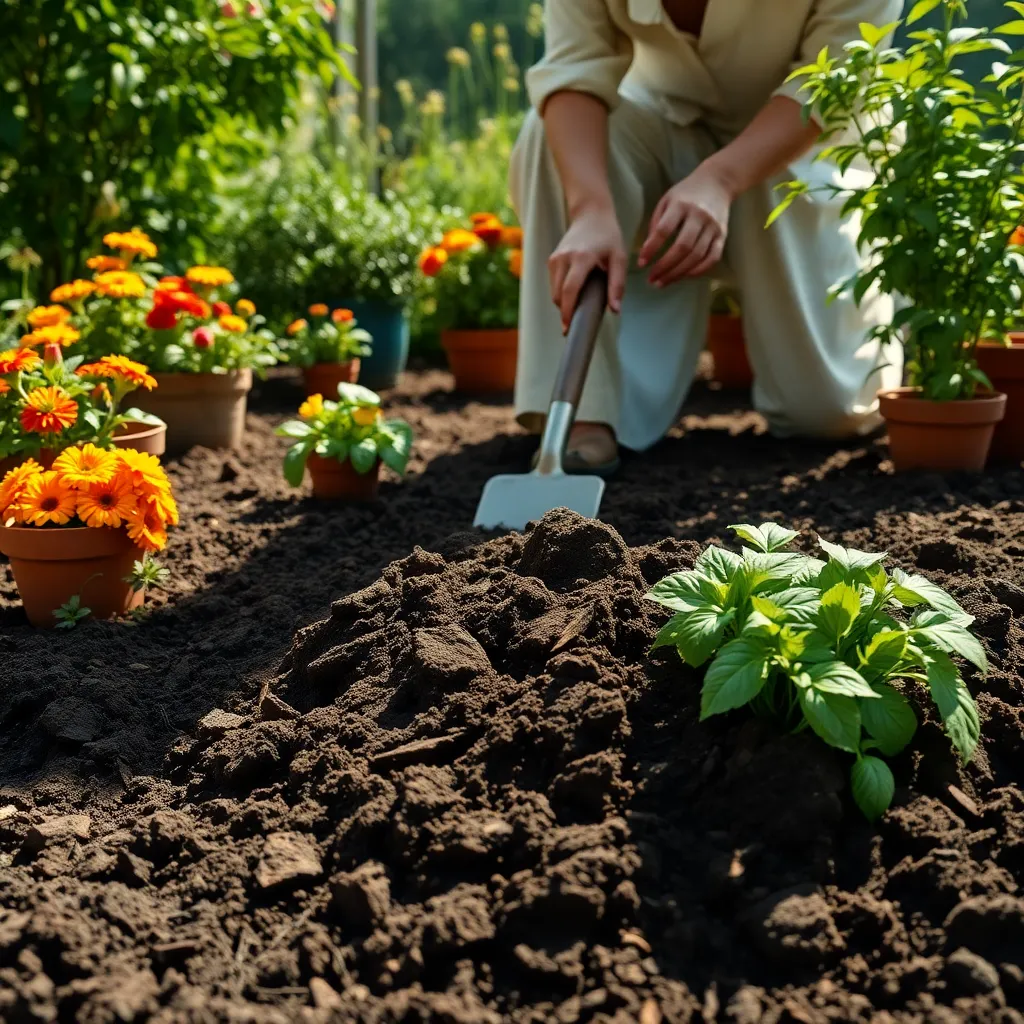
Preparing soil properly is the foundation of successful flower gardening. Begin by assessing your soil type, as this will determine the amendments you may need to make. It’s crucial to understand whether your soil is sandy, clay, or loamy, as each type has different drainage and nutrient holding capacities.
Next, consider enhancing your soil’s fertility with organic matter. Adding compost or well-rotted manure can significantly improve soil structure and provide essential nutrients. For beginners, a simple way to ensure your soil is rich enough is by mixing in a layer of compost about 2–3 inches deep before planting.
Ensuring proper drainage is equally important. If your soil is heavy clay, you might need to create raised beds or add sand to improve drainage. On the other hand, sandy soils benefit from organic material, which helps retain moisture and nutrients.
Finally, check the pH level of your soil, as it affects nutrient availability. Most flowers thrive in slightly acidic to neutral soil, with a pH of 6.0 to 7.0. You can purchase a simple soil test kit to determine your soil’s pH and adjust it if necessary, using lime to raise it or sulfur to lower it.
Watering Tips for New Gardeners

Understanding how much and when to water your plants is crucial for a thriving garden. New gardeners should start by observing their plants and soil to determine moisture needs, as different flowers have varying requirements.
Water early in the morning to allow the soil to absorb moisture before the heat of the day evaporates it. This practice reduces the likelihood of fungal diseases that can occur when plants stay wet overnight.
For most flowers, it’s beneficial to water deeply but less frequently. This encourages roots to grow deeper into the soil, making plants more drought-resistant and resilient.
Consider investing in a soaker hose or drip irrigation system to deliver water directly to the soil where it’s needed most. These methods are efficient and conserve water compared to overhead sprinklers.
Check the soil moisture level by sticking your finger an inch into the soil; if it feels dry, it’s time to water. Over-watering is a common mistake, so always ensure drainage is adequate to prevent root rot.
Mulching around your flowers can help retain moisture in the soil and reduce the frequency of watering. Organic mulches like straw or shredded bark not only conserve water but also enrich the soil as they decompose.
Simple Pest Management Strategies
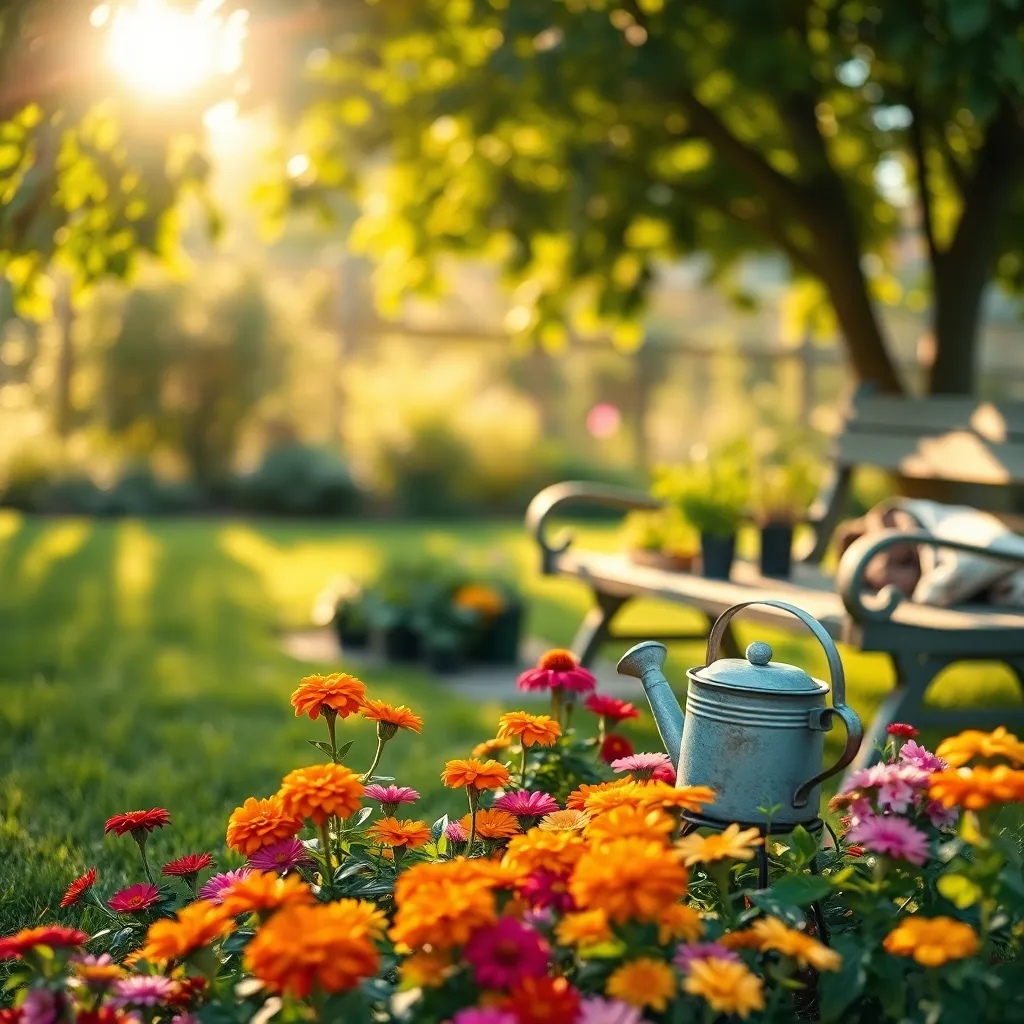
Managing pests in your garden can seem daunting, but it’s often simpler than you think. Start by keeping a close eye on your plants; regular inspection is key to catching problems early.
Encourage beneficial insects like ladybugs and lacewings, which naturally reduce pest populations. Planting companion plants such as marigolds or nasturtiums can attract these helpful creatures to your garden.
For immediate pest concerns, try using a homemade spray made from water and dish soap. Mix a few drops of dish soap with a quart of water, then spray it on affected plants to deter soft-bodied insects like aphids.
Incorporate a diverse range of plants to minimize pest outbreaks, as monocultures can attract specific pests in large numbers. Rotating your plants every season also disrupts pest life cycles and can significantly reduce infestations.
Conclusion: Growing Success with These Plants
In exploring the vibrant garden of relationships, this article introduced you to five foundational blooms that can flourish with just a little nurturing: effective communication, trust-building, shared experiences, mutual respect, and the importance of personal growth. Each concept serves as a cornerstone in cultivating a thriving and enduring relationship. By understanding and applying these principles, you set the stage for a partnership that not only blossoms but also withstands the test of time.
As an actionable step, choose one of these concepts and take a small, meaningful action today—whether that’s having an open conversation with your partner, planning a shared activity, or taking time for self-reflection. These small steps will plant the seeds for deeper connection and understanding.
Remember, like a garden, relationships require ongoing care and attention. Bookmark this article to revisit these essential concepts whenever you need a gentle reminder or an inspiring nudge. By doing so, you are investing in a future where your relationship can grow with resilience and grace. Embrace this journey of growth with confidence, knowing that with each step, you are cultivating a path to lasting success and happiness in your relationship.

